

Unigraf is a worldwide leading video electronics testing company based in Finland. Unigraf specializes in Hardware and Software Test Tools for testing USB-C™, DisplayPort™, and HDMI™ interfaces. Unigraf’s technological strengths are a deep understanding of the aforementioned interfaces in R&D, Test Automation, and Compliance Test environments. World’s leading electronics manufacturers use Unigraf’s tools to test smartphones, laptops, tablets, monitors and more in the R&D development phase as well as in production line testing. Furthermore, Unigraf’s compliance test tools can be used to verify that products are designed and work according to standards set by e.g. Video Electronics Standards Association (VESA) and Digital Content Protection LLC (DCP).
Unigraf’s vision is to ensure better quality for your future technology products. Unigraf’s expertise lies within a deep understanding of the fundamental technologies of DisplayPort, USB-C and HDMI interfaces. Unigraf is a worldwide leader in DisplayPort compliance test tools. This has allowed Unigraf to master the DisplayPort alternate mode within the USB-C interface. For HDMI interface Unigraf provides a wide range of R&D debug and production line test tools. Across the range, Unigraf’s test tools can be used in R&D development, compliance testing and production line testing – regardless of the interface.
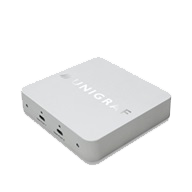
Unigraf UTC-274 is a test automation tool for testing two USB-C products in production line and R&D environments. UTC-274 features a versatile and reliable way of testing connector pins of the USB-C interface. UTC-274 is delivered with an SDK with a set of automatic test script samples and support for Python scripting.
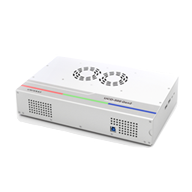
Unigraf UCD-500 Gen2 is a DP 2.1 Link Layer CTS Test Tool. It supports testing DP Sinks and Sources with UHBR 20 Max Bit Rate Capability with both USB-C and DP connectors.
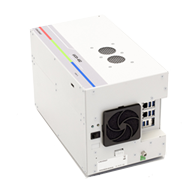
Unigraf UCD-452 (P/N: 066615) is a Dolby Vision Test Tool and 10K Video Generator for testing HDMI 2.1 sink devices up to 10K video modes.
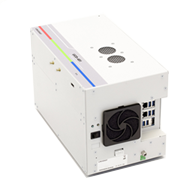
Unigraf UCD-451 (P/N: 066617) is a video generator for testing Dolby Vision on DisplayPort™ 1.4a sink devices with HBR3 max bit rate capability.
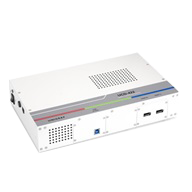
UCD-422 is a video generator and analyzer for testing HDMI 2.1 interface up to 10K video modes and supports advanced resolutions such as 4K@120Hz, 8K@60Hz and 10K@30Hz with uncompressed video. UCD-422 offers support for FEC, DSC, eARC and HDCP 1.4/2.3. Any video format, audio format, frame rate, video timing, and InfoFrames etc. including timestamps can be generated in any sequence, allowing the UCD-422 to generate nearly endless combination of test scenarios.
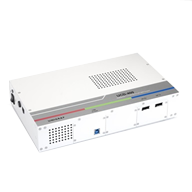
Unigraf UCD-400 is an HBR3 capable 8K video generator and analyzer. With UCD-400 you can verify DisplayPort™ interfaces up to 8K@30 Hz (8K@60 Hz with DSC) and 4K@120 Hz video modes. The unit supports FEC, DSC, and LTTPR. UCD-400 is approved as an official DP 1.4a Link Layer compliance test tool including DSC and HDCP 2.3 CTS tests.
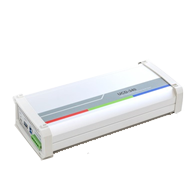
Unigraf UCD-340 is a 4K USB-C DP Alt Mode video analyzer and generator. With UCD-340 you can verify USB-C DP Alt Mode Sinks and Sources up to 4K@60Hz resolution. UCD-340 features a versatile and reliable way of testing video, audio, DisplayPort Alt Mode features, power delivery functions and connector pins of the USB-C interface. UCD-340 is the only DCP LLC Approved Test Tool for HDCP 2.3 CTS testing on USB-C DP Alt Mode Transmitter and Receiver devices. UCD-340 is controlled via easy-to-use PC GUI called UCD Console. All tests can be automated for compliance testing, R&D debugging and production line testing.
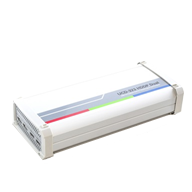
Unigraf UCD-323 is a fully-featured R&D debug tool for testing all aspects of HDMI 2.0 and DisplayPort 1.4a (limited to HBR2 max bit rate capability). UCD-323 combines Reference Source and Reference Sink functionality in one unit. UCD-323 is a DCP LLC Approved Test Tool for HDCP 2.3 CTS Tests on DisplayPort Transmitters and Receivers devices.
Unigraf UCD-323 is delivered with ready-made test sets that can be configured and run via easy-to-use PC GUI called UCD Console. All tests can be automated for compliance testing, R&D debugging, and production line testing.
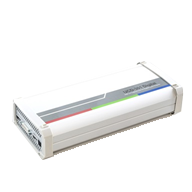
Unigraf UCD-301 is a UHD / 4K@60Hz compliant video capture unit for testing DisplayPort™ and HDMI Sources. UCD-301 enables testing all aspects of HDMI 2.0 and DP 1.4a with HBR2 max bit rate capability. UCD-301 is a DCP approved test tool for HDCP 2.3 compliance testing of DisplayPort transmitters.
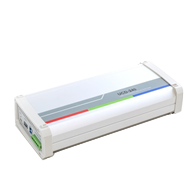
Unigraf UCD-240 is a cost-effective and flexible Test Automation tool for testing USB Type-C products in the production line environment. UCD-240 is a fully-featured Test Automation tool supporting DP Alt Mode, 4K@60Hz and NI TestStand. UCD-240 is easy-to-use and its test coverage includes all essential features of the USB-C interface.
Unigraf UCD-340 test tool is used to configure test parameters for the automated tests used with UCD-240. UCD-340 is used with easy-to-use UCD Console UI to configure the test parameters. Only one UCD-340 unit is needed to configure tests for all UCD-240 devices.
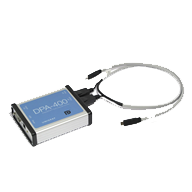
Unigraf DPA-400 and its AUX Channel Monitor user interface (GUI) provides a compact, pocket-sized tool for recording and analyzing DisplayPort AUX channel traffic. It enables the user to monitor, capture, and document all AUX Channel transactions over a DisplayPort link.
AUX Channel Monitor GUI detects, timestamps, and parses all DisplayPort Configuration Data (DPCD) reads and writes, Multistream (MST) Sideband Channel Communication, and EDID reads.
The GUI is able to parse DPCD registers for DP versions up to 2.1. It decodes HDCP 1.3 and 2.3 messages and DP Sideband Channel Communication messages. The activity of the Hot Plug Detect (HPD) signal and optional user-defined input signals will also be tracked and time-stamped.
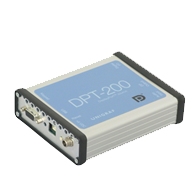
Unigraf DPT-200 is a fully-featured and easy to use DisplayPort source for development, debug and production line testing of DP controlled flat panel display modules, monitors and TV sets. DPT-200 is fully compatible with Unigraf DP RefSource CTS tools. DPT-200 is a hardware platform for HDCP compliance tests. It serves also as an AUX Controller for PHY CTS test automation.
Unigraf DPT-200 allows you to monitor all aspects of the DP interface like Link and HDCP status, sink EDID and DPCD. You can also manually set DPCD, Link Parameters, Output Level Timing and Pattern used. The Source Console GUI also includes an advanced EDID editor and programmer for changing the sink EDID information. The DPT-200 allows you to easily perform tasks that are not possible with normal DP source devices. In addition to the Source Console GUI, you can use the Production Test Command set to interface DPT-200 to your automated production system.
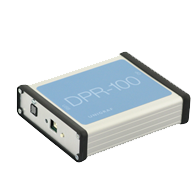
DisplayPort Reference Sink DPA-100
Unigraf DPR-100 is a compact-sized and easy to use platform for Audio and HDCP compliance tests of DisplayPort Source devices. It provides all features needed for testing DisplayPort source devices like PC display cards or portable computers. It serves also as an AUX Controller for PHY CTS test automation.
Unigraf DPR-100 allows you to monitor all aspects of the DP interface like Link and HDCP status and MSA. You can manually read and set DPR-100 DPCD, sink capabilities, issue varying HPD pulses etc. The Sink Console GUI also includes an advanced EDID parser for viewing and reprogramming its EDID information.
Unigraf is a trusted provider of VESA, DCP LLC and HDR10+ Technologies approved Compliance Test Tools for DisplayPort, USB-C and HDMI interfaces. The world’s leading electronics manufacturers are using Unigraf’s tools to validate their products. As there are hundreds of manufacturers making DisplayPort devices, compliance testing according to VESA and DCP standards is the only way to ensure interoperability between different DisplayPort devices available on the market. Only by testing with certified compliance test tools, you can obtain the DisplayPort certification.
Unigraf UCD-500 is a DisplayPort™ 2.0 Video Generator and Analyzer unit for testing DisplayPort Sinks and Sources up to 8K@60Hz and 16K@60 Hz (with DSC) video modes with UHBR 20 Max Bit Rate Capability. DP 2.1 Sink and Source Link Layer CTS tests are available with UCD-500 as an add-on licenses.
Please refer to the DP CTS Tool Options for Unigraf UCD-500 for detailed information about the 2.0 Link Layer CTS tests for DisplayPort Sinks and Sources.
DisplayPort version 1.4 was first published in 2016, and it was updated to 1.4a in 2018. Unigraf continued a pioneering approach to DisplayPort Link Layer CTS testing by introducing UCD-400, a HBR3 capable 8K video analyzer and generator. The selection of tests available for UCD-400 provides all tests needed for VESA Certified DP 1.4a Link Layer CTS including DSC testing for DisplayPort Sinks and Sources.
Please refer to the DP CTS Tool Options for Unigraf UCD-400 for detailed information about the DP 1.4a Link Layer CTS tests for DisplayPort Sinks and Sources.
UCD-Console is a common GUI for all UCD-300/400/500 series products. For DP 1.4a Link Layer CTS testing UCD Console features ready-made test sets that you can easily select, run and monitor. Watch the video below to see how easily you can perform DP 1.4a Link Layer CTS tests on DisplayPort Sinks and Sources.
In 2018 VESA announced that it now requires HDCP testing as part of the DisplayPort testing requirement for certification. If a DisplayPort receiver or transmitter supports HDCP (as reported in the product CDF) it shall be tested as part of the certification requirements for obtaining the DisplayPort Logo. (Source: VESA)
Unigraf’s DisplayPort 1.4a Test Tool UCD-400 is approved for testing HDCP 2.3 compliance of Transmitter, Receiver and Repeater devices. For testing Transmitters and Receivers Unigraf offers a 4K video analyzer and generator, UCD-323. Further, 4K video analyzer UCD-301 is approved for testing DisplayPort Transmitters.
The HDCP 2.3 CTS tools are available beyond the DisplayPort connector. UCD-340 is the only DCP Approved HDCP 2.3 CTS Test Tool for testing USB-C DP Alt Mode Transmitters and Receivers devices.
HDCP 2.3 CTS tests are controlled via Unigraf’s UCD Console user interface. UCD Console features built-in test sets for HDCP 2.3 CTS tests. You can easily select and run the HDCP 2.3 tests. The video below shows how easily you can select, configure and run HDCP 2.3 CTS tests with UCD Console GUI.
Dolby has worked closely with industry leaders over the last 50 years to make the stories and experiences as engaging as possible—first with noise reduction, then 5.1 surround and 7.1 surround, and now with Dolby Vision™. Dolby Vision™ transforms the way you experience movies, TV shows, and games with incredible brightness, contrast, and color that bring entertainment to life before your eyes. By fully leveraging the maximum potential of new cinema projection technology and new TVs’ display capabilities, Dolby Vision™ delivers high-dynamic-range (HDR) and wide-color-gamut content. The result is a refined, lifelike image that will make you forget you are looking at a screen.
4K televisions have “more pixels” and newer standards for UHD TV also include high frame rates, but these standards don’t make each pixel able to better represent the full range of brightness we see in reality. Dolby Vision™ is the Dolby Laboratories solution to meet this challenge. The current TV and Blu-ray standards limit maximum brightness to 100 nits and minimum brightness to 0.117 nits, while also limiting the range of colours that can be displayed. Dolby Vision™ colour depth allows up to 10,000-nit maximum brightness. (Dolby 2016)
In the compatibility test for Dolby Vision™ Unigraf will provide playback and capturing of the test video and audio content with UCD-series test tools. Dolby will provide customers with the SDK (Software Development Kit) that enables analyzing the Dolby Vision™ video captured with UCD-series test tools. UCD-series test tools also support Dolby Vision signaling test using Dolby Vision VSIF and Dolby Vision Vendor Specific Extended Metadata Packets (EMP) using TMDS. With the Dolby SW package, UCD-series test tools are a mandatory tool for any e.g. television or monitor manufacturer that is willing to have a Dolby Vision™ certificate on their products.
Unigraf UCD-451 is an approved video generator for testing Dolby Vision on DisplayPort™ 1.4a sink devices with HBR3 max bit rate capability. Thanks to an extended 32GB memory, UCD-451 enables the verification of 8K Dolby Vision™ content.
Unigraf UCD-452 is an approved Dolby Vision Test Tool and 10K Video Generator for testing HDMI 2.1 sink devices up to 10K video modes. Thanks to an extended 32GB memory, UCD-452 enables the verification of 8K Dolby Vision™ content.
Unigraf UCD-323 is an approved Dolby Vision Test Tool and a 4K video generator for testing HDMI 2.0 sink devices up to 4K video modes.
Unigraf's UCD-323 and UCD-422 are approved for HDR10+ compliance testing. Unigraf’s HDR 10+ Display Device Test License allows HDR 10+ adopters to generate HDR 10+ specific patterns that are required by HDR 10+ LLC to certify Sink devices such as TVs and Monitors for HDR 10+.
Unigraf’s solution integrates Klein K-10A colorimeter for automated testing of HDR 10+ Display Device tests allowing users to set and play the patterns without having to manually measure luminance values of HDR 10+ patterns. Users that do not have Klein K-10A colorimeter will be able to manually record measured luminance values into the software GUI. This solution is easy to use and reduces the time required to run HDR 10 Display Device certification tests.
Unigraf' provides companion test tools to be used with Oscilloscopes in testing PHY compliance on DisplayPort.
For detailed information, please refer to DisplayPort PHY Compliance Test Automation Tools.
Unigraf UCD-323 Gen2 is a companion tool for PHY test equipment to perform automated DP 2.0 PHY compliance testing for Source and Sink DUTs.
Unigraf DPT-200 is operating as a DP AUX Controller to automate the DP PHY testing of DisplayPort sink devices with a compliant PHY Test Equipment. DPT-200 is already compatible with Keysight.
Unigraf DPR-100 operates as a DP AUX Controller to automate the DP PHY testing of DisplayPort source devices with a compliant PHY Test Equipment. With the AUX Controller firmware, DPR-100 is compatible with Keysight, Teledyne LeCroy and Tektronix oscilloscopes.
All Unigraf’s Compliance Test Tools are delivered with ready-made test sets. These test sets can be easily configured and run from the UCD Console PC GUI. With the provided TSI SDK, all Compliance Tests can be automated.
R&D engineers around the world rely on Unigraf’s Test Tools while developing new products in R&D laboratories. Fundamental elements of R&D Debugging are the ease of use, flexibility and state of the art features. With Unigraf’s test tools you can rely on easy-to-use tools with full test automation capabilities.
New HDMI 2.1 and DisplayPort 2.0 specifications enable video up to 10K resolution. Live preview of the captured video and audio alongside detailed information of the incoming or outgoing streams are a must when determining the stability and quality of the video. Further, different CRC based video tests enable detailed testing of the video stream stability and quality.
One of the most common manufacturing defects on USB-C devices such as smartphones are poorly soldered connector pins. The USB-C connector is capable of delivering and receiving up to 100W of power. For safety purposes, it is essential to test that the USB-C connector pins are properly soldered into the circuit board. A poorly manufactured USB-C connector can cause the cable or the device to overheat. This has known to cause the melting of the cable or serious overheating of the device causing terminal damage.
Common manufacturing defects on HDMI and DisplayPort devices are poorly manufactured connector pins. A poorly soldered or grounded connector can result as a defected signal which can cause the video to fail. Some modern receiver devices have a high-quality receiver chip which can correct a defected signal. However, all receivers are different and even if your transmitter device works with one monitor, it does not mean that it will work with all monitors. Therefore, it is crucial to use an actual test tool to test HDMI and DisplayPort connectors.
For the handshake between the transmitter and receiver device, DisplayPort has a dedicated bus, the AUX Channel. Since the transmitter device controls the process, it makes requests for the receiver. The only way how the receiver can communicate with the transmitter is by issuing a pulse in the Hot Plug Detect (HPD) signal.
Since the AUX Channel is the key element in the transmitter/receiver communication, the core to understanding the handshake process is logging the AUX Channel communication. AUX Channel Monitor is an essential companion for any DisplayPort test engineer during debugging Link or HDCP protocol related issues or when running Compliance Tests. The capability to analyze the details of the handshake between the Source and the Sink is often the key issue for being able to reveal and solve an interoperability problem. Especially when working with standard Sinks and Sources with limited debugging capabilities, an AUX Channel Monitor will essentially shorten the debugging time.
The message transfer between DisplayPort transmitter and receiver occurs by reads and writes to the DisplayPort Configuration Data (DPCD) register of the receiver device. By reading certain registers in the DPCD, the transmitter will be aware of the capabilities of the receiver. During the process of establishing the data links, the Link Training, source writes to DPCD to indicate the target link configuration and the receiver, in turn, writes there the result of each link training stage.
Recalling the detailed meaning of each bit in the tens of DPCD registers is challenging. Therefore it is essential for the productivity of the debug process that the tool used readily parses DPCD content in AUX Reads and writes to the terminology commonly used by e.g. VESA DP Specification.
Unigraf DPA-400 AUX Channel Monitor is compatible also with DisplayPort Alternate Mode in the USB-C interface. With the Unigraf provided cable, you can connect the DPA-400 between any two USB-C devices and monitor the AUX Channel transactions related to the DP Alt mode.
It is crucial to monitor and control the link between the receiver (e.g. monitor) and transmitter device (e.g. game console). With a proper test tool, you can monitor and control the link status.
The video below shows link monitoring feature of UCD Console GUI. You can see the unstable link in lanes 0 and 1 from the error counter and the red color of the link status.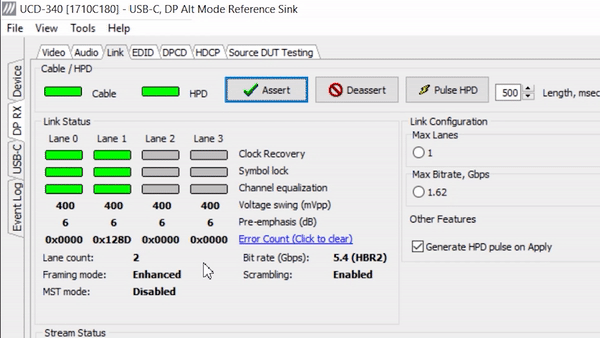
Extended Display Identification Data (EDID) is a metadata format for display devices (e.g. monitors) to describe their capabilities to a video source (e.g. gaming consoles). When testing transmitter devices, it is crucial to ensure that the device will work with a variety of different kinds of receiver devices (e.g. monitors and TVs).
UCD Console comes with a built-in EDID tool. You can use the EDID tool to simulate different monitors and make sure that your transmitter device works seamlessly with different monitors. You can read EDID from receiver devices and save the EDID on your PC. You can then load the EDID file into the UCD series test tools and the test tool will act as the receiver device. Further, a separate EDID Editor enables modifying the EDID.
HDCP content encryption is used in DisplayPort, DVI and HDMI interfaces. For receiver and transmitter devices it’s crucial to be able to read and write HDCP protected content. Further, VESA requires HDCP 2.3 Compliance testing as part of the DisplayPort certification. All Unigraf UCD-series Test Tools offer support for HDCP 1.4/2.3.
Obtaining a certificate from e.g. VESA or DCP requires thorough testing. Only with officially approved test tools you can fully make sure that your transmitter or receiver device works according to the specifications. It is crucial to use the approved test tools already in the development phase as it is the only way to ensure that everything is designed according to the specifications from start to finish. Testing and manufacturing products according to standards are the only way to make sure that your device works seamlessly with other devices available in the market.
Proper test tools enable removing human error from testing. For example, some modern monitors and TV’s have high-quality receiver chips that can correct a defected signal. Therefore, even if a transmitter device works with a monitor does not imply that it will work with all monitors. Also, it is impossible for the human eye to detect minor defects in a video stream with a resolution up to 8K@60Hz. Using receiver devices as a test tool for transmitter devices and vice versa is not sufficient.
As the same connector that transfers video, audio and data can transfer power up to 100W, the damage caused by poor design can be extensive. If soldering or assembly of the connector pins is done poorly, there is a chance for the cable or device to overheat and cause some serious damage. Unigarf has developed a unique Electrical Test that you can use to test that all connector pins are properly soldered and assembled. Electrical Test can reveal problems in both power delivery and link caused by poor signal continuity through connector pins.
With automated testing, you can remove human error from testing and considerably fasten the testing process. In R&D Debugging you can easily select the tests you want to automate and free your time for other tasks while the automated testing sequences take care of the testing. Unigraf’s Test Tools enable three different options for implementing automated testing. Click the link below for detailed information about different test automation options.
Using proper test tools is the only way to make sure that products are manufactured flawlessly. Automated testing in the production line will save time and remove human error from testing.
Proper test tools enable removing human error from testing. For example, some modern monitors and TV’s have high-quality receiver chips that can correct a defective signal. Therefore, even if a transmitter device works with a monitor does not imply that it will work with all monitors. Also, it is impossible for the human eye to detect minor defects in a video stream with a resolution up to 8K@60Hz. Using receiver devices as a test tool for transmitter devices and vice versa is not sufficient.
As the same connector that transfers video, audio and data can transfer power up to 100W, the damage caused by poor design can be extensive. If the soldering or assembly of the connector pins is done poorly, there is a chance for the cable or device to overheat and cause some serious damage. Further, a defective signal can cause the video signal to fail. Unigarf has developed a unique Electrical Test that you can use to test that all connector pins are properly soldered and assembled. Electrical Test can reveal problems in both power delivery and link caused by poor signal continuity through connector pins. Unigraf’s test tools featuring Electrical Testing are UCD-340/240 and UCD-301.
Unigraf’s Test Automation Software Development Kit (SDK) is called Test System Interface (TSI). TSI.exe is a hardware-independent, high-level Software API (Application Programming Interface). TSI consists of specific command scripts (test cases) that can be used to run specific tests on UCD series test tools. Combining these individual test cases into macros enables automated tests for testing e.g. video, audio, link, and USB-C connector pins. TSI supports testing of all crucial functionalities of DisplayPort, HDMI, and USB-C DP Alt Mode devices.The use of TSI and the test cases significantly simplifies integrators’ need to do application-specific programming. TSI ensures the compatibility of the application software with any Unigraf test equipment hardware. Both TSI and Test Cases ensure the user flexibility for future upgrades and, what is a major cost factor, re-use of the written code of the software.
Unigraf’s test automation tools enable a different level of test automation integration based on your needs.
You can integrate the controlling of UCD-series test tools and TSI test scripts into existing test systems with C++ code. Unigraf’s high-level TSI API enables easy integration of automated tests into existing test systems.
Using TSI scripting tools and running tests from the command line is the simplest test automation solution. TSI SDK includes test scripts that you can use to control the test tool. You can create macros by combining several scripts. Macros enable combining multiple TSI scripts into one batch file that can complete a specific test sequence e.g. for CRC video tests or testing of USB-C connector pins.
You can use Unigraf’s UCD Console GUI to configure the test parameters. As all devices are different, it is crucial to make sure that the test parameters work seamlessly with your device. After configuring and making test runs on the UCD Console, you can save the test parameters into a known location. You can then call test scripts and macros from the command line.
Using a 3rd Party Test Management Software is another common way to automatize testing. Unigraf’s UCD-series Test Tools are compatible with 3rd Part Test Management SWs such as National Instruments TestStand.
Contact Unigraf for information on test automation with TestStand.
Unigraf UTC-274 is a test automation tool for testing two USB-C products in production line and R&D environments. UTC-274 features a versatile and reliable way of testing connector pins of the USB-C interface. UTC-274 is delivered with an SDK with a set of automatic test script samples and support for Python scripting.
All Unigaf’s UCD-series test tools support test automation. UCD-240 and UCD-300 series test tools are specially designed for production line testing. They are cost-effective, robust and flexible tools that can be easily integrated into any existing test systems.
Unigraf UCD-240 is an automated test solution designed specifically for testing USB-C products in the production line environment. UCD-240 features an efficient and effortless way of USB Type-C sinks and sources. UCD-240 test coverage includes all necessary features of USB-C interface.
The provided TSI SDK enables user access to the vital test parameters and configured tests can be easily run from the command-line. Unigraf’s TSI SDK enables easy integration of automated tests into existing test systems. UCD-240 is also fully compatible with third-party test management software e.g. NI TestStand.
Unigarf UCD-323 is a 4K@60Hz capable video analyzer and generator for testing DisplayPort (up to HBR2) and HDMI 2.0 transmitter and receiver devices. UCD-323 is an approved test tool for Dolby Vision™ testing.
Unigraf UCD-301 is a 4K@60Hz capable video analyzer for testing DisplayPort (up to HBR2) and HDMI 2.0 transmitter devices. UCD-301 is delivered with Electrical Test which enables testing of connector pins.
Automated tests help us save time and remove human errors from testing. All tests supported by Unigraf’s test tools can be automated from simple R&D debugging tests to complicated compliance tests and fast-paced production line tests. There are different ways to automate tests and Unigraf’s test automation solutions make sure that you find the best solution for your needs.
Unigraf’s Test Automation Software Development Kit (SDK) is called Test System Interface (TSI). TSI.exe is a hardware-independent, high-level Software API (Application Programming Interface). TSI consists of specific command scripts (test cases) that can be used to run specific tests on UCD series test tools. Combining these individual test cases into macros enables automated tests for testing e.g. video, audio, link and USB-C connector pins. TSI supports testing of all crucial functionalities of DisplayPort, HDMI and USB-C DP Alt Mode devices.
The use of TSI and the test cases significantly simplifies integrators’ need to do application-specific programming. TSI ensures the compatibility of the application software with any Unigraf test equipment hardware. Both TSI and Test Cases ensure the user flexibility for future upgrades and, what is a major cost factor, re-use of the written code of the software.
As an example, you can automate all tests you need to test a USB-C Smartphone: Application: Testing USB-C Smartphones
Unigraf’s PC GUI, UCD Console, can be used to configure the tests. Since all devices have different characteristics they require different test parameters in order for the automated tests to run smoothly. By configuring the tests in UCD Console and saving the test parameters in your test library, you can run the tests via TSI.exe.
You can integrate the controlling of UCD-series test tools and TSI test scripts into existing test systems with C++ code. Unigraf’s high level TSI API enables easy integration of automated tests into existing test systems.
Using TSI scripting tools and running tests from the command line is the simplest test automation solution. TSI SDK includes test scripts that you can use to control the test tool. You can create macros by combining several scripts. Macros enable combining multiple TSI scripts into one batch file that can complete a specific test sequence e.g. for CRC video tests or testing of USB-C connector pins.
You can use Unigraf’s UCD Console GUI to configure the test parameters. As all devices are different, it is crucial to make sure that the test parameters work seamlessly with your device. After configuring and making test runs on the UCD Console, you can save the test parameters into a known location. You can then call test scripts and macros from the command line.
Using a 3rd Party Test Management Software is another common way to automatize testing. Unigraf’s UCD-series Test Tools are compatible with 3rd Part Test Management SWs such as National Instruments TestStand.